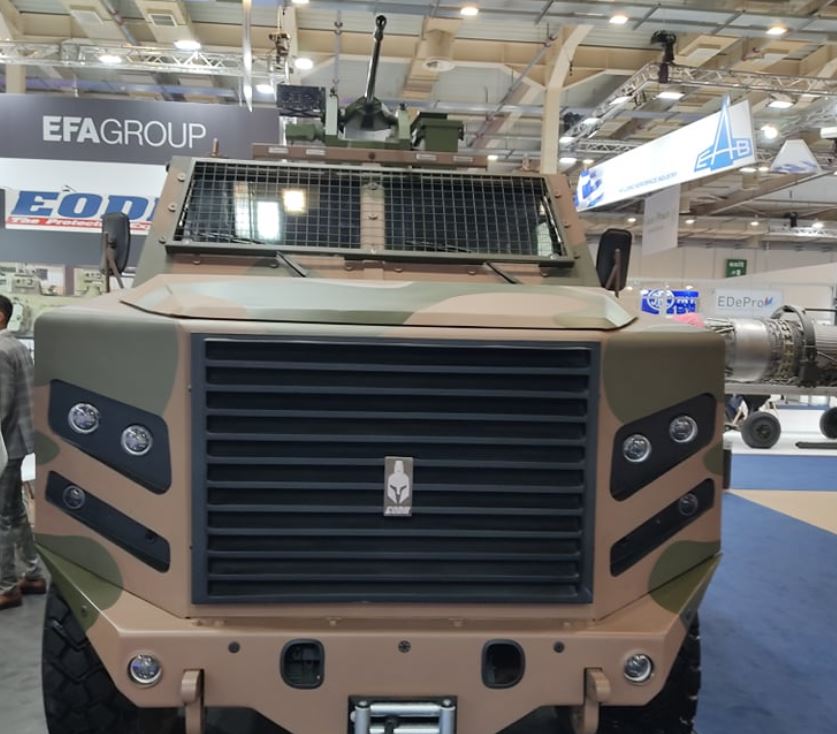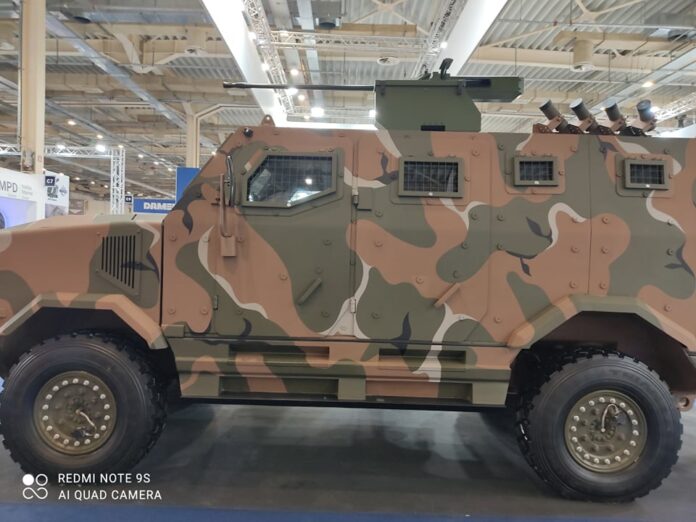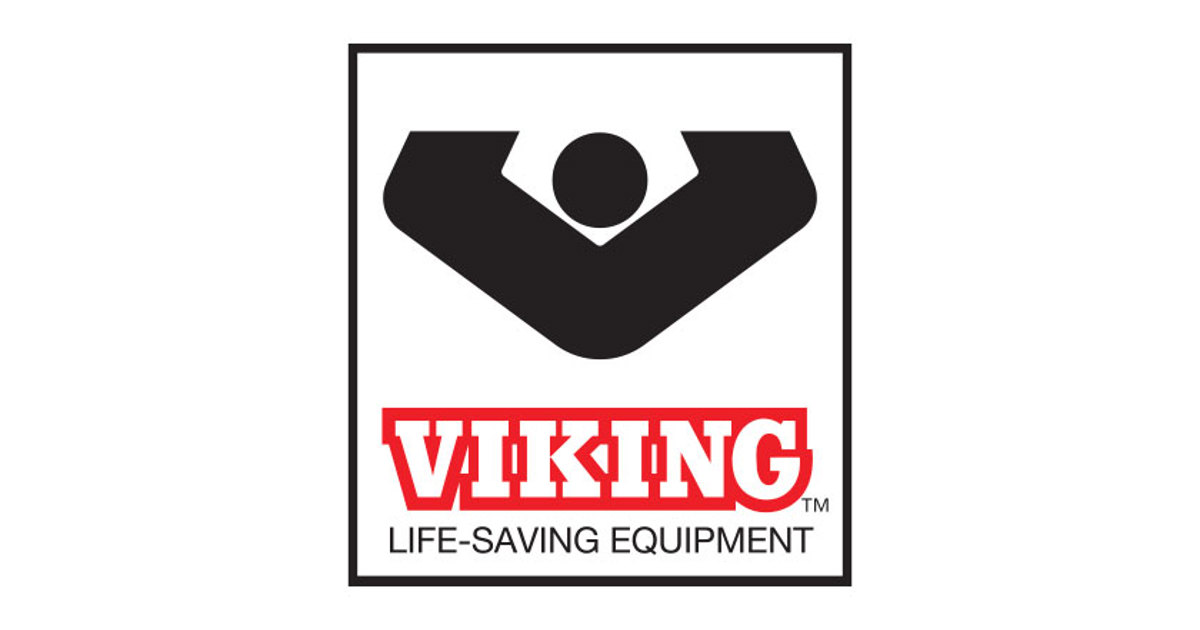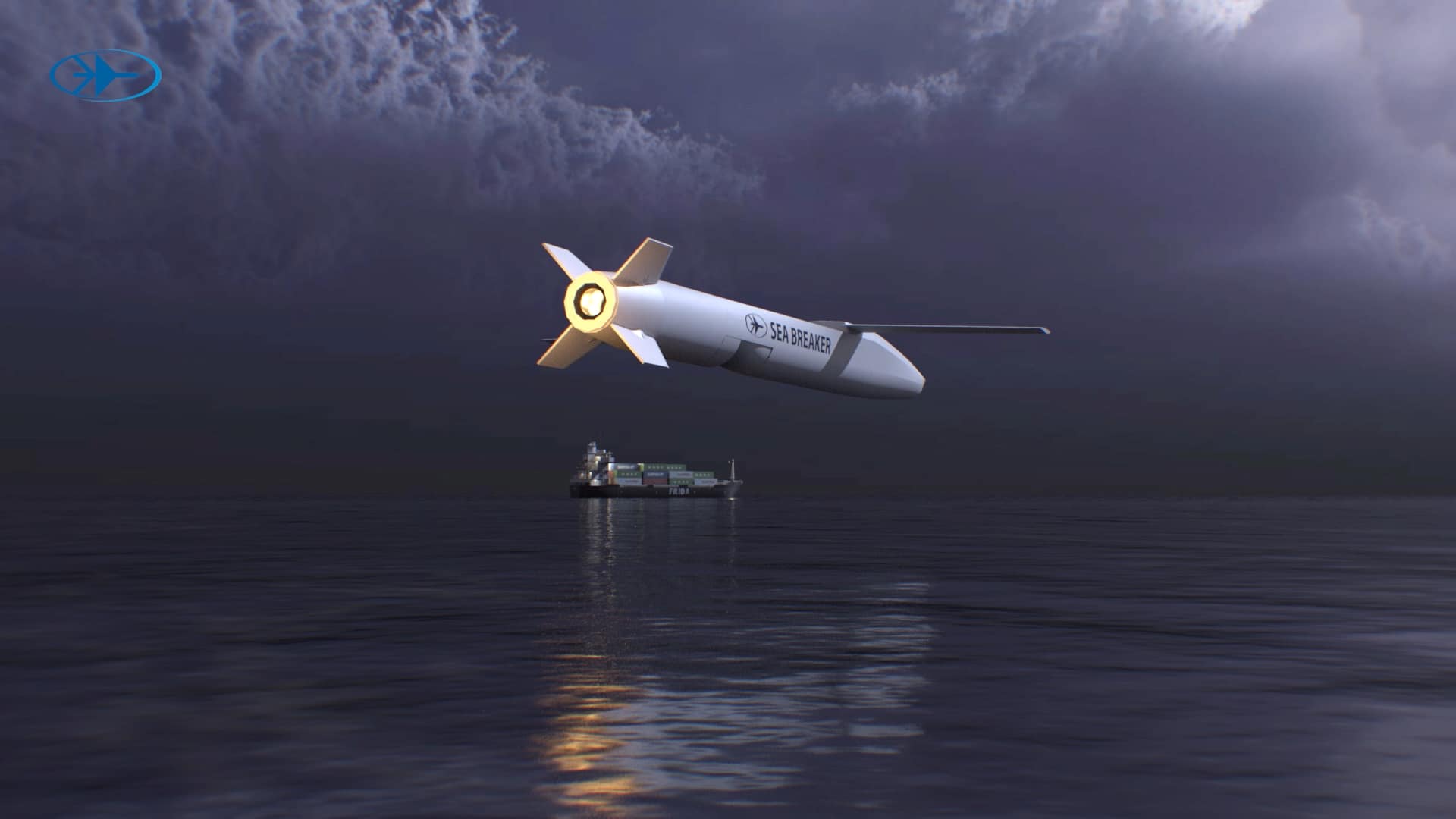Ukrainian company UKRSPECSYSTEMS has developed the PD-2, a new generation of modular vertical takeoff and landing unmanned aerial vehicle that is displayed at DEFEA 2021, International defense exhibition in Greece.
While developing PD-2 UAS UKRSPECSYSTEMS team pursued a simple goal, to develop an efficient and versatile solution that may be operated in any environment or weather conditions, consumables and spare parts should be available worldwide, the configuration of the system should be changed within minutes to fit mission requirements as well as production time and export procedures should be reasonable.
The airframe of the PD-2 can be easily configured as a VTOL (Vertical Take-Off and Landing) fixed-wing UAS (Unmanned Aerial System) or as a conventional fixed-wing aircraft with or without chassis. Rapidly change airframe configuration on-the-go wherever you are within 15 minutes. No tools are required. You can change take-off and landing methods, wingspan, endurance, MTOW, payload weight.
The PD-2 is powered by a 4-stroke carburetor gasoline engine and can reach a maximum flight speed of 140 km/h. It has a maximum take-off weight of 55 kg and an endurance of 8 hours.
The PD-2 is a multi-purpose UAS. Modular construction and flexibility allow changing the payload on the go depending upon mission tasks. PD-2 UAV is capable of cargo delivery in different ways: dropdown via fuselage/wing modules or even landing the drone for load/unload and further take-off. Cargo delivery may be executed by command or at a predetermined point.
Control and communication are vital for the mission's success. While designing PD-2 UAS our team did its best to ensure the capability of working under different circumstances. This affects not only the weather conditions, but relief complexity and the communication channel preferred for mission success, depending upon various factors.
Standard communication configuration contains a line of sight ground control station, using radio connection. It has two datalinks (the main one, used for video and telemetry exchange within 200+ km range, and backup one, for telemetry only), with the feature of automatic hopping between them in case of GNSS or signal loss and AES-256 encryption.
The ground control station has two laptops for easy integration wherever you need (truck, container, etc). If the relief is flat and open it’s enough to use quadropod, once the mission faces difficult terrain motorized mast comes in hand. Ground control station automatically enables frequency hopping in case of GNSS or signal loss. Moreover, there’s advanced software that ensures the features mentioned above work perfectly on the go with no human intervention.
DEFEA 2021: UKRSPECSYSTEMS from UKraine has developed the PD-2, a new generation of modular vertical takeoff and landing unmanned aerial vehicle

www.armyrecognition.com
Israeli company Plasan and its Greek partner ELVO presents the Hyrax, a light armored all-terrain vehicle fully developed by Plasan in cooperation with the OEM Mercedes-Benz.
The Israeli defense holding company SK Group and Plasan have purchased the Greek manufacturer of wheeled and tracked vehicles ELVO (Hellenic Vehicle Industry). The Greek company will be jointly owned by Israeli entities and will produce special vehicles for customers in Greece and abroad.
Powered by 183 horsepowers developed by a Mercedes’ G300 CDI 6V Euro-3 engine coupled to a five-speed automatic transmission, that delivers 400 Nm of torque, Hyrax has a power to weight ratio of 38 HP/T, thus maintaining the class’ agility, acceleration, and power braking. This aspect is becoming essential not only on highways but also ascending or climbing mountainous dirt roads with full armor and combat load. At the Gross Vehicle Weight of 4,800 kg Hyrax carries up to 810 kg of payload when fully manned and loaded for a mission. As for air mobility, the vehicle is sized for transportation in C-130 aircraft.
The All-Wheel Drive (AWD) driveline uses a central differential locking system that includes electrically operated front and rear locks that enable all four wheels to overcome harsh terrain conditions. With a wheelbase of 2,850 mm and ground clearance of 245 mm Hyrax can climb a 400 mm vertical step, cross trenches 600 mm wide, and ford 600 mm of water, using its integral, elevated air intake. It safely negotiates 80% slope and 54% side slopes. The AWD maintains high stability and safety on and off-road, moving on dirt, mud, snow and paved roads. Hyrax maintains all the G Class’ safety features, including power steering, ABS, ESP, BAS, EBD, and airbags for the front seats.
A major advantage of the Hyrax’ is its reliance on a commercial rolling chassis rated for 4.5-ton gross vehicle weight. Unlike other vehicles that require extensive modification to meet payload requirements, the robust frame and automotive system is ready to support the armored cabin, sustaining the vehicle’s dynamics through the full operating envelope, even in the fully combat-loaded configuration. Built in cooperation with the original manufacturer (OEM), Hyrax is approved under the manufacturer’s warranty and is fully supported through the manufacturers’ worldwide service network.
As an armor-protected vehicle Hyrax utilizes Plasan’s battle-proven kitted hull technology. This modular design employs advanced, light armor that defeats small arms, fragments and armor-piercing rounds, meeting EN1522 B6, B7 and STANAG 4569 Level 1 in the basic configuration and is upgradable to B7 and STANAG Level 2. The armor is made of composite materials and includes a large transparent windshield and side windows on all sides.
DEFEA 2021: Israeli Company Plasan and its Greek partner ELVO presents the Hyrax, a light armored all-terrain vehicle

www.armyrecognition.com
SK Group, a privately held technology and innovation holding company specializing in global frontline defense, law enforcement solutions, marine infrastructure and property development, presents for the first time at DEFEA its entire portfolio of advanced systems. Solutions range from IWI's (Israel Weapon Industries) small arms, to Meprolight's electro-optical sights and Camero's groundbreaking Xaver Long Range system.
According to Mr. Ronen Hamudot, SK Group and IWI's VP Marketing and Sales, "This is the first time the SK Group is exhibiting at DEFEA, introducing its various solutions to the European market. Our extended offering, as displayed at the show, meets the challenges military forces and law enforcement agencies in regions are facing. “SK Group has vast experience in know-how technology transfer and cooperation with various industries and governments around the world. We are open to creating new partnerships and local support" Hamudot adds.
IWI- Israel Weapon Industries - is a leader in the production of combat-proven small arms for law enforcement agencies, governments, and armies around the world. The company presents its 7.62X51mm caliber IWI Tavor-7, a member of the successful Tavor Bullpup Rifle family, which was developed in close cooperation with the Israel Defense Forces (IDF), based on lessons learned from actual combat situations.
The Tavor-7 is a fully ambidextrous platform on which the ejection side and the charging handle can be switched quickly and easily from side to side by the user. The ambidextrous features include a safety lever, magazine release, and bolt catch similar to the X95. The IWI Tavor-7 also includes an M-LOK fore-end (at 3 and 9 o'clock) as well as MIL-STD 1913 Picatinny rail at the 6 o'clock position, to allow the use of multiple devices and accessories. The rifle’s body is built from high-strength, impact-modified polymer, and has a hammer-forged, chrome-lined, free-floating barrel for enhanced accuracy and life cycle.
Additional features include a short-stroke gas piston with a 4-position variable gas regulator, (including an OFF position – a unique feature designed for special operation needs), a rotating bolt system that ensures maximum safety for the user, and a pistol grip that can be changed or modified. The IWI Tavor 7 enables 100% interchangeability, reducing maintenance costs. It is available in four colors: Gray, OD Green, Black, and Flat Dark Earth, with replaceable barrels available in three lengths – 16.5” (419mm), 17" (432 mm) and 20" (508 mm) and a weight (without a magazine) of 4.4-4.5 Kg, defends of configuration.


Meprolight(1990) Ltd. – an Israeli manufacturer of optical & electro-optical systems, thermal and night vision equipment, and self-illuminated sights for military, law enforcement and civilian applications – introduces its recently launched Mepro O2 sight, which is lightweight (approx. 280g), and includes a built-in light sensor and automatic brightness control system that enables clear visibility of the reticle in any lighting conditions - a significant advantage for easy and efficient target acquisition.
The Mepro O2 sight features non-reflective optics without light signature toward the target, for enhanced force protection; a combination of an integral motion sensor and configurable sleep time of 4-8 hours, for power saving and extended operation; a new, improved, rugged MIL-SPEC mounting design and a protected three-button control keypad.
The sight shall shortly be offered with a 5-segment reticle supporting multiple pre-set aiming patterns switchable at user-level; in addition to its existing advantages, the cutting-edge multi-pattern Mepro O2 version will support all tactical scenarios and allow the user to seamlessly transition between reticle configurations suitable for variable ammunition types such as 5.56, 300BLK subsonic, or 300BLK supersonic, as the mission requires.
Meprolight(1990) Ltd. – an Israeli manufacturer of optical & electro-optical systems, thermal and night vision equipment, and self-illuminated sights for military, law enforcement and civilian applications – introduces its recently launched Mepro O2 sight, which is lightweight (approx. 280g), and includes a built-in light sensor and automatic brightness control system that enables clear visibility of the reticle in any lighting conditions - a significant advantage for easy and efficient target acquisition.
The Mepro O2 sight features non-reflective optics without light signature toward the target, for enhanced force protection; a combination of an integral motion sensor and configurable sleep time of 4-8 hours, for power saving and extended operation; a new, improved, rugged MIL-SPEC mounting design and a protected three-button control keypad.
The sight shall shortly be offered with a 5-segment reticle supporting multiple pre-set aiming patterns switchable at user-level; in addition to its existing advantages, the cutting-edge multi-pattern Mepro O2 version will support all tactical scenarios and allow the user to seamlessly transition between reticle configurations suitable for variable ammunition types such as 5.56, 300BLK subsonic, or 300BLK supersonic, as the mission requires.
Camero-Tech,a pioneer in developing, manufacturing and marketing of pulsed-based UWB micro-power radar ‘Through Wall Imaging’ systems will introduce for the first time its groundbreaking Xaver Long Range 80 system - a portable, high-performance ISR through-wall imaging system, offering forces maximum protection in the field. The XLR80 enables the detection of live objects behind walls, at distances of more than 100 meters away. This new capability provides a breakthrough operational advantage in a hostile environment.
DEFEA 2021: SK Group, a privately held technology and innovation holding company specializing in global frontline defense, law enforcement solutions, marine infrastructure and property development, presents for the first time at DEFEA its entire portfolio of advanced systems. Solutions range...

www.armyrecognition.com
At DEFEA 2021, Greek company Miltech Hellas unveils its new mobile armored control station fitted with multi-sensor surveillance systems which can be used to conduct border control missions in day and night conditions.
MILTECH HELLAS Company offers a wide spectrum of defense applications ranging from field communication products, power converters & distribution units to thermal imaging systems. Moreover, MILTECH HELLAS provides customized/tailored electronics, electro-optics, and mechanical solutions.
The Long Range Surveillance portable cabin unveiled at DEFEA 2021 by Miltech Hellas consists of an armored cabin providing protection against the firing of small arms and grenades blast. It can accommodate a team of police officers or military personnel to conduct control of border or military areas.
The roof of the cabin is fitted with an IP thermal surveillance systems MLT-SUR-RT fully designed and manufactured by the company Miltech Hellas. The system is equipped with a day camera with optical and digital zooms as well as an IR (Infrared) thermal camera. Thermal imaging devices use passive sensors that capture the infrared radiation emitted by all objects with a temperature above absolute zero (thermal radiation), providing ideal operation regardless of lighting conditions.
The MLT-SUR-RT is connected to a computer offering a high level of images in day and night and day conditions under armor protection.
The MLT-SUR-RT is able to detect human movement at a maximum range of 4,350 m and identify people at a range of up to 750 m. For the vehicles, the systems has a maximum range detection of 9,950 m and an identification range of up to 1,850 m. Thermal imaging devices use passive sensors that capture the infrared radiation emitted by all objects with a temperature above absolute zero (thermal radiation), providing ideal operation regardless of lighting conditions.
DEFEA 2021: Greek company Miltech Hellas unveils its new mobile armored control station fitted with multi-sensor surveillance systems which can be used to conduct border control missions in day and night conditions.

www.armyrecognition.com
Israeli company Aeronautics presents its full range of small Unmanned Aerial Systems (UASs) Orbiter at DEFEA 2021, the International Defense Exhibition that takes place in Athens, Greece from 13 to 15 July 2021. Heading an industry group focused on unmanned solutions, systems and subsystems, Aeronautics Ltd. Provides integrated turnkey solutions based on unmanned systems platforms, payloads and communications for defense and civil applications.
Unmanned aerial systems have become an essential component of military operations in the modern age. They performed intelligence, surveillance, and reconnaissance (ISR) missions, carrying electro-optical/infra-red (EO/IR), radar, and signals intelligence sensors. With the improvement of data-links, enabling command and control in real-time, they also support Target Acquisition and Battle Damage Assessment (BDA), providing precise and efficient engagement of targets.
In the past, only the relatively large UAS were able to carry and operate the payloads necessary to support those missions. In recent years, the miniaturization of electronics and optronics systems and the availability of high-density batteries enable those missions to enable much smaller UAS to carry out most of those missions.
Unlike the larger and heavier drones that operate like manned aircraft and are bound to airfields or other complex launch and retrieval systems, small UAS are optimized to work and support operators at the tactical level. They can move with the forces, deploy from any terrain, including operations at sea, and interface smoothly with the tactical command and control network.
Mini and Tactical UAS
Aeronautics’ Orbiter family of Mini UAS (MUAS) and Small Tactical UAS (STUAS) is designed specifically for tactical applications. These UAS are maintained as organic assets with battalions and companies, and operate reliably and independently with a minimal logistical footprint backpack, vehicular or trailer mounted configurations, delivering critical real-time intelligence to the user.
Aeronautics designed its flying-wing-shaped unmanned aircraft with a blended wing-body that minimizes drag and maximizes lift to support extended missions and maintain a long-endurance, high dash, and slow loiter speed. The sleek flying machines use electrical propulsion for a fast, smooth flight, even under rough weather conditions. The wing shape and silent propulsion result in a low visual and acoustic signature, enabling the platform to operate over enemy territory unnoticed.
The chin-mounted payload has an unobstructed view forward, sideways, and downward, offering a simple and intuitive control of the payload and platform. The platform provided the lift to carry a significant load relative to the platform size, enabling efficient ground handling in the field. Recovery at the end of the mission relies on a parachute and airbag, enabling deployment on any terrain.
The flight and mission control system utilize the proprietary The system is operated and controlled by the Aeronautics proprietary Multi Operation Aerial Vehicle (MOAV) software, an advanced interface developed in-house, designed to serve a range of unmanned platforms. It is compliant with several NATO interfaces, including STANAG 4609 for interface and STANAG 4586 for UAS control, and H.246 for video streaming.
By combining multi-sensor systems on single or multiple platforms, users can merge EO/IR, radar, cellular interception, and electronic surveillance to support tactical missions, develop clear situational awareness for the troops.
Orbiter 2 – a compact, combat-proven man-portable mini-UAV, designed for operation by the tactical level, providing the warfighter real-time intelligence gathering surveillance and target acquisition and reconnaissance. Orbiter 2 is prepared for an automatic takeoff from a pneumatic catapult in only seven minutes and can fly for four hours on a mission. It can operate covertly in GPS-contested airspace and encrypted, frequency hopping datalink to support full-intensity warfare missions. It can also work at low-intensity warfare, counter-insurgency operations, and urban warfare, supporting Homeland Security (HLS) missions in border protection or maritime surveillance.
Orbiter 2 was designed to host many payloads at the baseline, offering versatile mission capabilities at the tactical edge. It operates day and night with the Controp M-STAMP multi-sensor EO/IR payload, performs persistent surveillance video motion detection missions with STAMP-VM. Photogrammetric mapping & 3D modeling missions use Rafael’s HD-Lite system while acting stand-in electronic attack would employ the Woodpecker EW jammer system from Netline. These are only a few of the tasks carried out by Orbiter 2.
Orbiter 1K – The combat-proven Orbiter 1K is a loitering munition platform based on Orbiter 2. The main difference between the two is introducing a fuselage adaptor carrying an explosive payload at the front end of the fuselage. The platform has a miniature EO/IR payload with a video tracker and a warhead weighing 1-2 kg in this configuration. A catapult also launches orbiter 1K. The system can be operated with a medium-range RF module to support analog or digital communications over 100 km range.
Other variants of Aeronautics’ flying wing design are Orbiter 3 and 4. These are larger and heavier platforms capable of performing extended missions inside enemy territory and operate multiple payloads simultaneously, supporting a military force at the tactical and operational level.
Orbiter 3 uses electric propulsion and is optimized for covert missions, supporting up to 7 hours of operation, carrying payloads up to 5 kg in weight, including multi-sensor stabilized EO payloads with integrated laser target-designation systems. It can also carry a cellular interception payload for electronic surveillance missions. Electrical propulsion allows users to operate quietly and undetected inside contested airspace and carry out special missions such as stand-in signals intelligence and electronic warfare. The Orbiter 3 STUAS is fitted with an encrypted digital datalink, supporting an operational radius of 150 km.
Orbiter 4 Slightly larger and almost twice heavier, Orbiter 4 uses a compact internal combustion engine to support 24-hour missions, flying up to 18,000 ft above ground. It has a much larger payload capacity, carrying 12 kg, compared to 5 kilograms of its electrically powered sibling. Both can carry multiple payloads, while Orbiter 4 can operate both payloads simultaneously, the T-STAMP-XR EO/IR in front and another load tucked in a fuselage bay. This can be a maritime search or synthetic aperture radar, electronic surveillance, or cellular interception payload.
With advanced image processing capabilities, automatic takeoff and recovery, and the ability to navigate with and without GPS and data link, Orbiter 4 delivers the capabilities of larger tactical platforms at a much smaller cost. Airstrip independent and operated by three personnel Orbiter 4 carries a small logistical footprint.
Maritime Capabilities
While all Orbiters can operate from the deck of naval vessels, including small boats with limited deck space, it is the Orbiter 4 that excels in this mission, for its versatile multi-payload capability of up to 12 kg and prolonged endurance of more than 24 hours, with an operational radius of 150 km. With its ease-of-use, low logistical footprint, and a small crew of 3 personnel, this runway-free aircraft suits all operational needs on land and at sea. Due to its open architecture and lean infrastructure demand, the Orbiter 4 can be specially adjusted for operation on any naval vessel, including small patrol boats.
The primary payload for this platform is Controp’s advanced STAMP-XR electro-optic payload. The T-STAMP-XR payload provides UAVs and aircraft with the image quality of large UAV payloads all in one miniature camera system. A secondary payload may be a Synthetic Aperture Radar (SAR). Among the different payloads area maritime patrol radar (MPR) and cellular interception modules, supporting naval surveillance, search and rescue operations over the land and sea, and satellite communications terminal. The cellular interception sensor allows Orbiter 4 to conduct ISR missions over different theaters exploiting the communication activity of the targets.
Among the maritime missions assumed by the Orbiter 4 are Deep-sea and coastal surveillance, Exclusive Economic Zone (EEZ), and Offshore facilities security. Other naval tasks support littoral and brown water operations, including ship self-defense, target acquisition for precision-guided weapons, gunfire direction, and BDA, similar to its role over land.
Summary
When multirotor drones are becoming a common ISR provider at the lowest tactical unit level, military forces require different means to obtain ISR at a long range. These warfighters must be able to see tens of kilometers away, acquiring targets and threats within reach of current and future weapon systems. Operating reliably and sustainably at these ranges, the Orbiter family of STUAS offers extended mission range and endurance, high dash speed, quickly reaching the area of operation, and mission endurance of many hours o a mission. A high level of autonomy, sophisticated communications, and datalinks are required to overcome interference and line-of-sight obstructions to ensure uninterrupted intelligence transfer to the user.
DEFEA 2021: Israeli company Aeronautics presents its full range of small Unmanned Aerial Systems (UASs) Orbiter at DEFEA 2021, the International Defense Exhibition that takes place in Athens, Greece

www.armyrecognition.com


 www.navyrecognition.com
www.navyrecognition.com




































